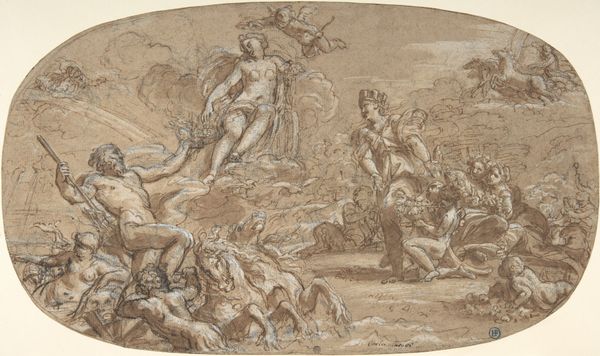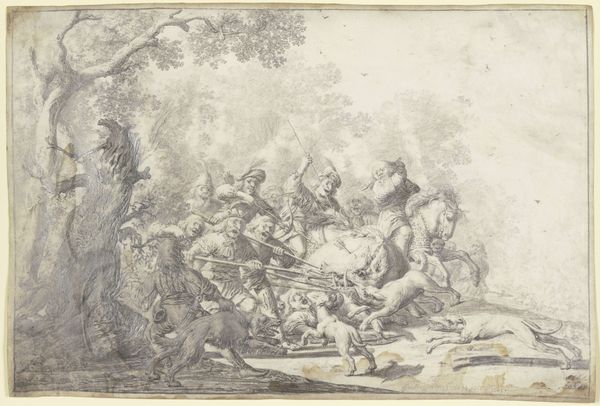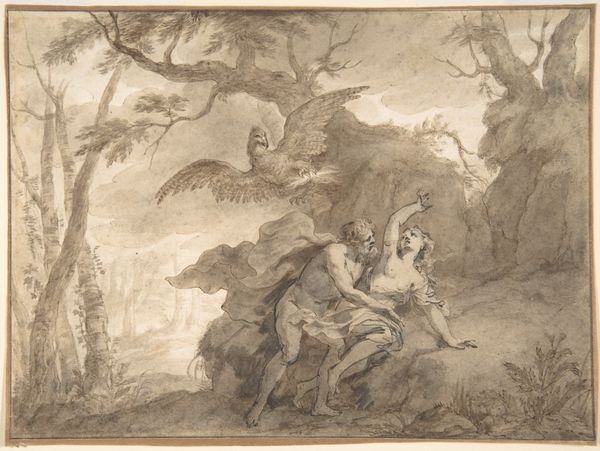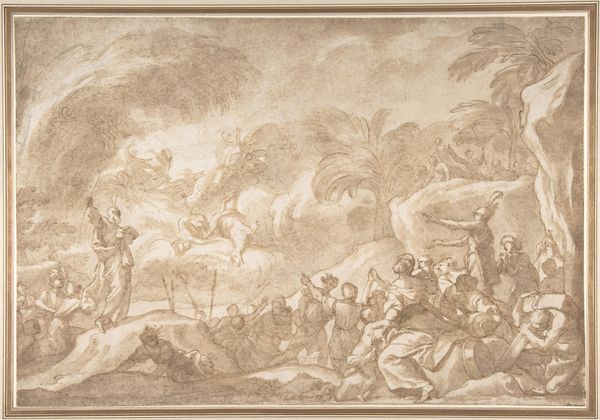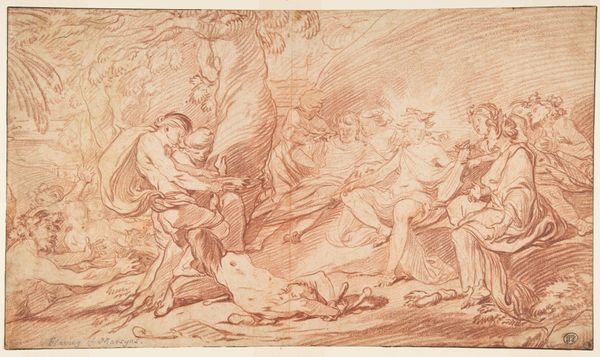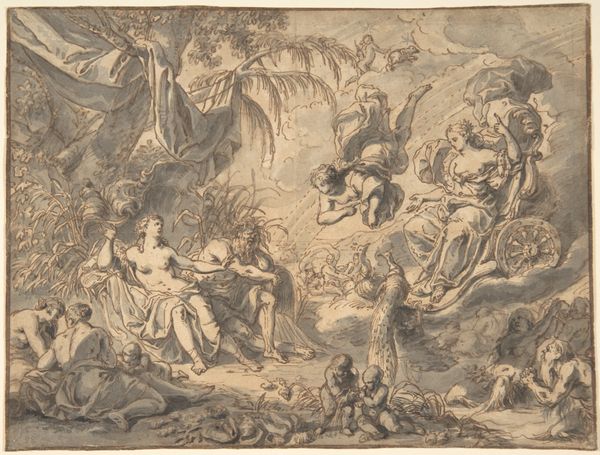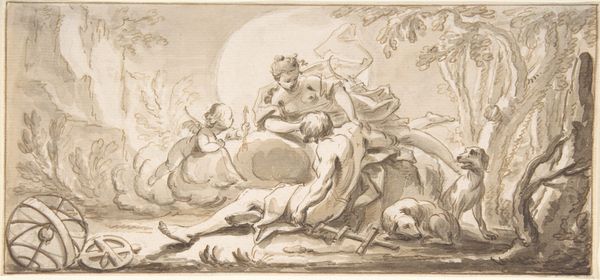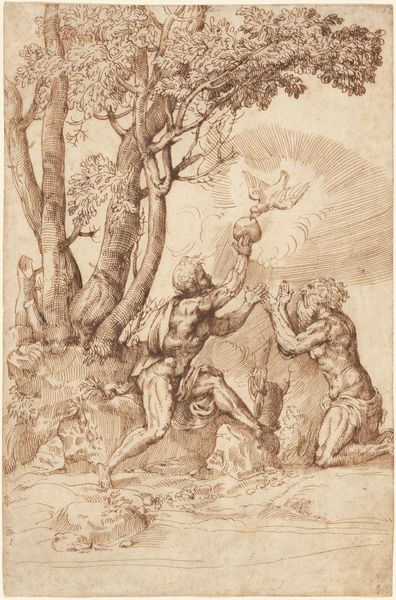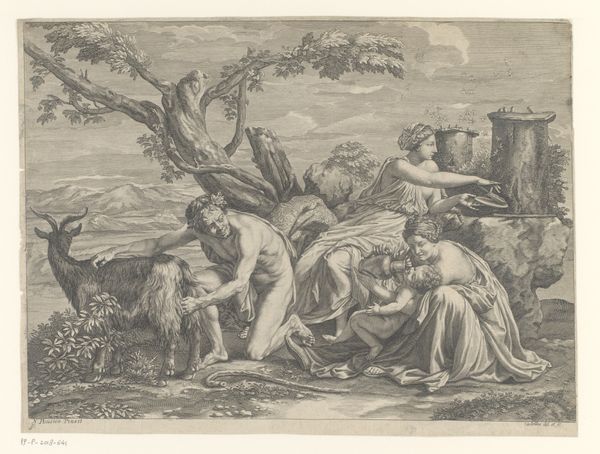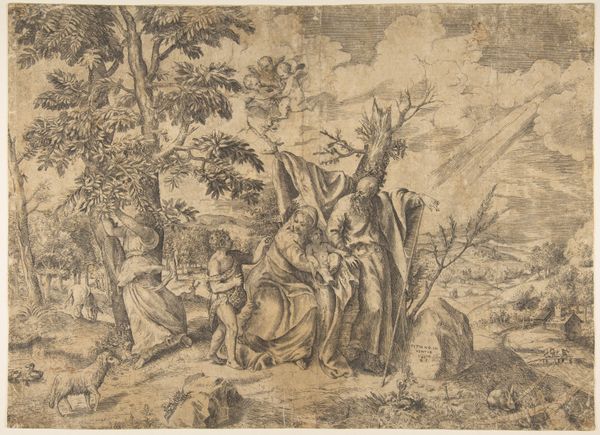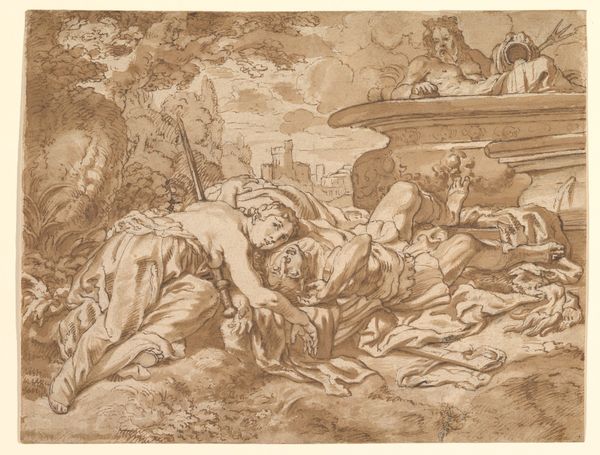
Dimensions: Overall: 19.5 x 24.8 cm (7 11/16 x 9 3/4 in.) mount: 30 x 40.4 cm (11 13/16 x 15 7/8 in.)
Copyright: National Gallery of Art: CC0 1.0
Curator: We are looking at Johann Heinrich Keller's "Diana and Endymion," a drawing created around 1765. He employed ink, charcoal, and pen to capture this romantic scene. Editor: The overall effect is hazy, almost dreamlike. The landscape melts into a background of smoky grays and whites. It evokes a feeling of secrecy and hidden passion. Curator: The composition definitely guides the eye. The artist utilizes contrasting light and dark washes. The figure of Diana illuminates the slumbering Endymion, emphasizing their connection. I’m particularly struck by the artist’s skill with relatively simple materials. We see here a delicate interplay between handmade paper, charcoal, pen and layered applications of ink washes. It speaks to the tradition of craft-making still influential at this moment. Editor: Observe Diana's posture and gaze. There's a deep tenderness, but also a hint of melancholic longing. The moon goddess, a symbol of chastity and the hunt, succumbs to mortal love. That act is rich with centuries of complex connotations. Her story explores ideas of sacrifice, transformation, and the allure of the forbidden. Curator: Note the presence of sheep and hunting dogs. Endymion's profession is part of what defines the subject here: his world of earthly labor meeting with the otherworldly. Think of the cultural associations then being forged about pastoral life – the romantic ideal of shepherds removed from society. Keller leverages a rich tradition of image-making around work. Editor: Absolutely, and that contrast underscores the central theme. This drawing also brings up something about female power. Diana, a powerful goddess, is at once actively choosing to be with the sleeping shepherd. Yet he is denied agency in this exchange as he slumbers – reflecting societal biases about female roles at this historical moment. Curator: Fascinating how the artist manipulates modest resources, turning pen and ink into commentary on social mores and labor, making the drawing almost like a form of social accounting. Editor: In the end, it’s the confluence of symbols, expertly drawn that stays with you. Diana's longing look is timeless. The mystery of enduring myths persists, allowing the audience to keep revisiting the images and asking new questions. Curator: Agreed, and the careful materiality and labor speak to its enduring impact for us as viewers even today.
Comments
No comments
Be the first to comment and join the conversation on the ultimate creative platform.
